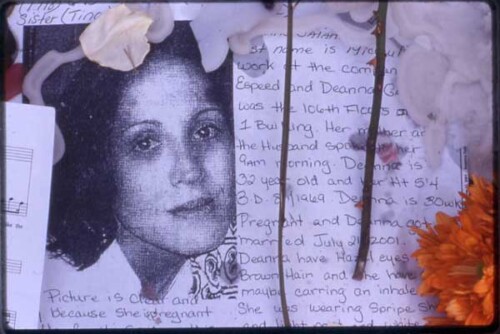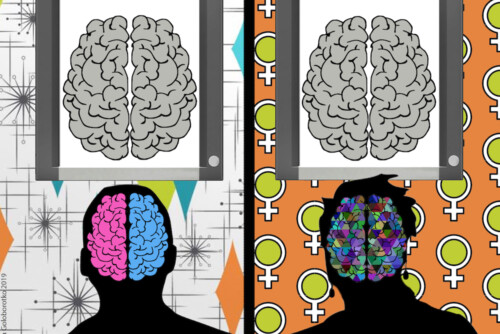Issues Confronting LGBTQQ Youth
LGBTQQ young people experience hostility in their families and schools, in the social services and juvenile justice system, and on the streets. They are affected by homophobia and transphobia, and also by the structural inequalities of poverty, racism, and sexism. The weak social service system, the nonprofit world, and the LGBTQQ movement itself too often address these problems as individual difficulties rather than social problems. At worst, young people are criminalized or pathologized, and at best, they are usually offered short-term individual solutions for difficulties requiring collective action for social justice.
Social Services and the Shelter System
LGBTQQ youth are sometimes kicked out of their homes by parents who will not accept them, and sometimes they run away to escape hostility or abuse. The first option for many is the foster care system. For older adolescents, however, accessing the foster care system can be a challenge. For these young people, the first step is often a crisis shelter. In New York City, teenagers who have been thrown out of their homes or who have run away from abusive families often face barriers to the child welfare system because they are viewed as troubled teenagers who are old enough to survive in the youth shelter system. Despite allegations of homophobic abuse or neglect, many of these young people are referred to a 30-day crisis shelter instead of long-term foster care services.
For the youth in foster care in New York City, there are two foster care programs offering services specifically for LGBTQQ youth. These programs offer a limited number of beds, however, and do not address the larger problems of institutional homophobia and transphobia in the wider system. Such limits clearly show that segregation cannot be a solution to the problems facing LGBTQQ young people, for whom all programs must become safe and welcoming.
Over the years, LGBTQQ foster youth and their advocates have worked to improve services for LGBTQQ youth in care. Today there are policies and training that have been implemented to protect LGBTQ foster youth. Despite these changes, however, there is little support available for people struggling with sexual and gender identity issues within their families.
Whether they end up in foster care or a youth shelter, a disproportionate number of our young people ultimately end up homeless, after families, foster care, and society have failed to meet their needs. There are only a handful of LGBTQQ youth-specific organizations to serve them. In a city of more than 30,000 out-of-home youth, under 500 crisis shelter beds are available.1 And less then 1 percent of these crisis beds are in programs specifically serving LGBTQQ young people. Five to eight thousand young people use emergency housing services each year, and LGBTQQ populations are disproportionately overrepresented among them.2 For these reasons, many LGBTQQ youth are faced with entering the mainstream adult shelter system, where their sexual or gender expression is likely to generate disapproval or violence.
Juvenile Justice
The juvenile justice system is charged with the responsibility for rehabilitating young people who commit crimes. If a young person who commits a crime has a supportive family, she is less likely to face time in a detention center. For those without family support, the juvenile system operates much like the adult criminal justice system. LGBTQQ youth are more likely to receive stricter penalties for crimes, and are overrepresented in detention centers, where they are often isolated. As in many institutions, staff report not having the appropriate training to handle queer youth, who must too often fend for themselves.3
Schools and Military Recruitment
Low-income and homeless LGBTQQ youth working to earn an education face an uphill battle. One study reported that up to 75 percent of older homeless adolescents drop out of high school.4 Those that remain in school are likely to attend schools heavy policed by the city’s police department. These young people, along with all low-income students, attend schools that feel more like detention facilities than educational institutions. Conflict in these heavily policed schools is often resolved through the juvenile and criminal justice systems. There have been efforts to make schools safer for LGBTQQ youth; however, some of these efforts use increased punitive measures to address conflict around sexual and gender identity issues.
For homeless queer youth, dropping out of school is often a result of an unstable family life, or violence and harassment at school. LGBTQQ youth in New York City public schools report being called derogatory names, being threatened with physical violence, and lacking protection by school staff. Despite this reality, national LGBTQQ organizations direct more money to colleges than to high schools and GED programs. They sponsor National Coming Out Day as a major event on college campuses, assuming that when young people come out they will be safer and more accepted. But coming out is not always a good option for young people with no financial or family support, and schools are not necessarily the central point of engagement for poor queer youth. With increasing national attention being drawn to the devastating effects of bullying, many of these national organizations are directing efforts to address the isolation and anti-gay bullying many LGBTQ youth are experiencing in schools across the country.
For queer youth not able to go to college, the military moves in. Low-income and poor youth of color are primary targets for military recruitment. Recruiters flock to high schools and set up camp in low-income communities of color, with the goal of filling their ranks with young people who have few other options. When mainstream LGBTQQ organizations fight for inclusion and equality in the military—but ignore the economic pressure placed on the least privileged young people to join up—they are abandoning the situation of queer young people whose military participation is not simply chosen.
When substantial resources are directed toward college campuses in support of “coming out” activities, or when emphasis is placed on inclusion in the military but not on the economic underpinnings of recruitment patterns, the plight of less-privileged young people is neglected. The mainstream movement often fails to analyze the intersections of class and race within the broader LGBTQQ community, and tends to ignore the experience of poor queer youth of color in particular.
- Empire State Coalition for Children and Families, 2007 Survey (New York: Empire State Coalition for Children and Families, 2007). Note: At the time of this writing, the city’s youth shelters have seen a significant decrease in funding. As a result, we anticipate that there will be a decrease in shelter beds available for homeless youth, especially LGBTQQ youth. [↩]
- New York State Office of Children and Family Services, Runaway and Homeless Youth Annual Report (New York: New York State Office of Children and Family Services, 2010). [↩]
- Randi Feinstein, Andrea Greenblatt, Lauren Hass, Sally Kohn, and Julianne Rana, Justice for All?: A Report on the Lesbian, Gay, Bisexual and Transgender, Youth in the New York State Juvenile Justice System (New York: Lesbian and Gay Youth Project of the Urban Justice Center, 2001). [↩]
- Advocates for Children, In Harm’s Way: A Survey of Lesbian, Gay, Bisexual and Transgender Students Who Speak About Harassment and Discrimination in New York City Schools (New York: Advocates for Children, 2005). B. Cochran, et. al., “Challenges Faced by Homeless Sexual Minorities: Comparison of Gay, Lesbian, Bisexual and Transgender Homeless Adolescents with their Heterosexual Counterparts,” American Journal of Public Health 92.5 (2002). [↩]




